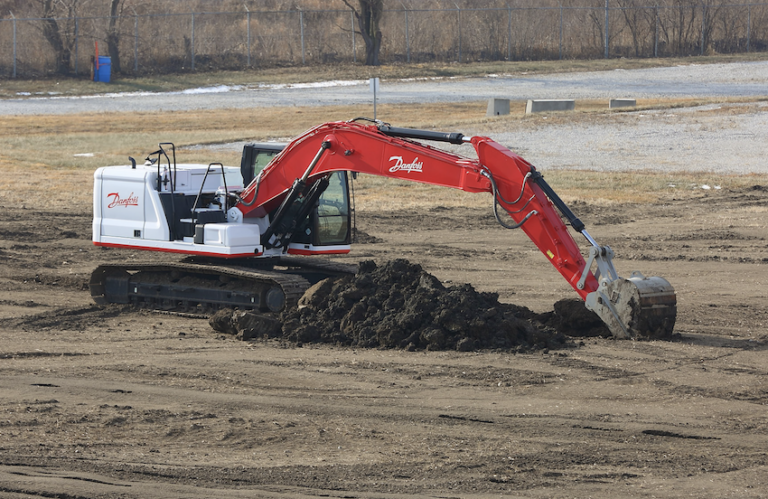Danfoss Scotland, part of global hydraulics and electric powertrain systems supplier Danfoss Power Solutions, has received a grant worth £4,941,809 (approximately $6.1 million) from the U.K. Government’s Department for Energy Security & Net Zero through the Red Diesel Replacement Phase 2 Competition.
The programme provides funding for projects developing low-carbon alternatives to red diesel for the construction, mining and quarrying sectors. Danfoss will use the funds to validate its Dextreme Max system in a 30-ton electric excavator, which it expects will reduce energy consumption by 50%.
Danfoss’ Dextreme Max system is designed to cut excavator energy consumption by up to 50% by reducing energy losses and recovering energy that would otherwise be wasted. An integral component of the Dextreme Max system is the DDP1x0D, a Digital Displacement hydraulic pump that enables energy recovery from excavator motions such as slew deceleration and boom lowering.
The energy recovery feature of the pump was developed as part of the Red Diesel Replacement Phase 1 Competition and proven at expected efficiency levels in a test rig. In Phase 2, Danfoss will integrate the DDP1x0D pump, an Editron electric drive, and other components required for the new system architecture into a battery-electric excavator.
“Electrification offers a promising route to decarbonisation, but the immense power consumption of excavators means that expensive batteries and charging infrastructure are required. This cost is a major barrier to wider adoption of electric machines,” said Leif Bruhn, head of digital displacement, Danfoss Power Solutions. “Excavators account for 50% of emissions from construction machinery, and hydraulic systems within excavators waste as much as 70% of the useful power delivered by the engine. By dramatically improving excavator energy efficiency, we can reduce the battery size and charging energy required to do the same amount of work.”
Danfoss plans to convert a 30-ton electric excavator at its Application Development Centre in Nordborg, Denmark, beginning in January 2024. The excavator will then be shipped to and operated at a quarry in the U.K., with project completion planned for February 2025.





